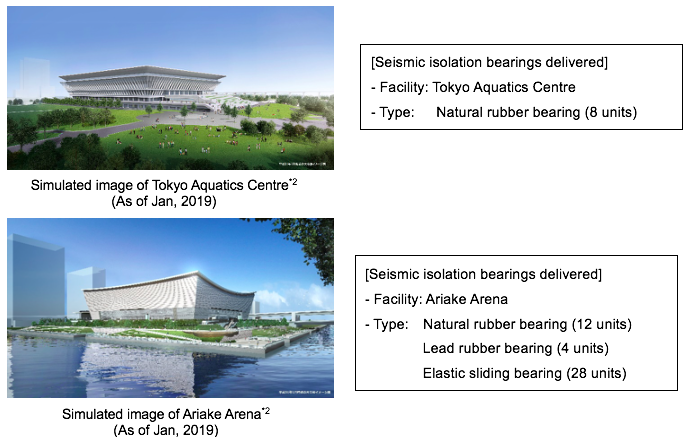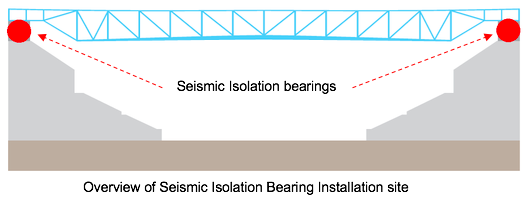Tire manufacturer Bridgestone is famous for products that can absorb bumps on the road, but it also has technology that can handle shocks on a greater scale with its earthquake protection systems installed at new venues for the 2020 Olympics in Tokyo.
With the Japanese city prone to strong earthquakes, two newly-constructed structures that will host swimming, diving, volleyball, and wheelchair basketball at the event have been fitted with seismic isolation technology from Bridgestone.

To prepare for the chance of a natural disaster damaging the structural engineering of the Tokyo Aquatics Center and Ariake Arena Bridgestone’s seismic isolation bearings are flexible structural supports that isolate a structure from the ground to help reduce the spread of seismic shock and decrease the chance of damage in the event of an earthquake.
These bearings range in size between 600mm and 1800mm diameters. The two new venues, which are set to be completed in 2019, feature a roof seismic isolation structure. Installing the bearings beneath the roof instead of under the foundation of the venue helps lower the burden placed on the roof’s structural support elements. This type of installation is often used in hall- or dome-shaped facilities with large, open spaces such as sporting arenas.

“Bridgestone has been at the forefront of seismic isolation technology for decades,” said Tomohiro Kusano, vice president and senior officer, responsible for diversified products solutions business at Bridgestone Corporation. “As we prepare to welcome the world to the Olympic and Paralympic Games in our hometown our seismic isolation bearings will help ensure a safe and enjoyable experience for all visitors to these two much-anticipated venues during Tokyo 2020 and for many years to come.”

The tire maker has been developing and manufacturing its seismic isolation technology in Japan since 1984 used in various facilities in Japan and around the world, including historic landmarks such as Tokyo Station and Los Angeles City Hall, as well as disaster preparedness facilities, government buildings, hospitals, commercial facilities, residential apartment complexes, and more.





